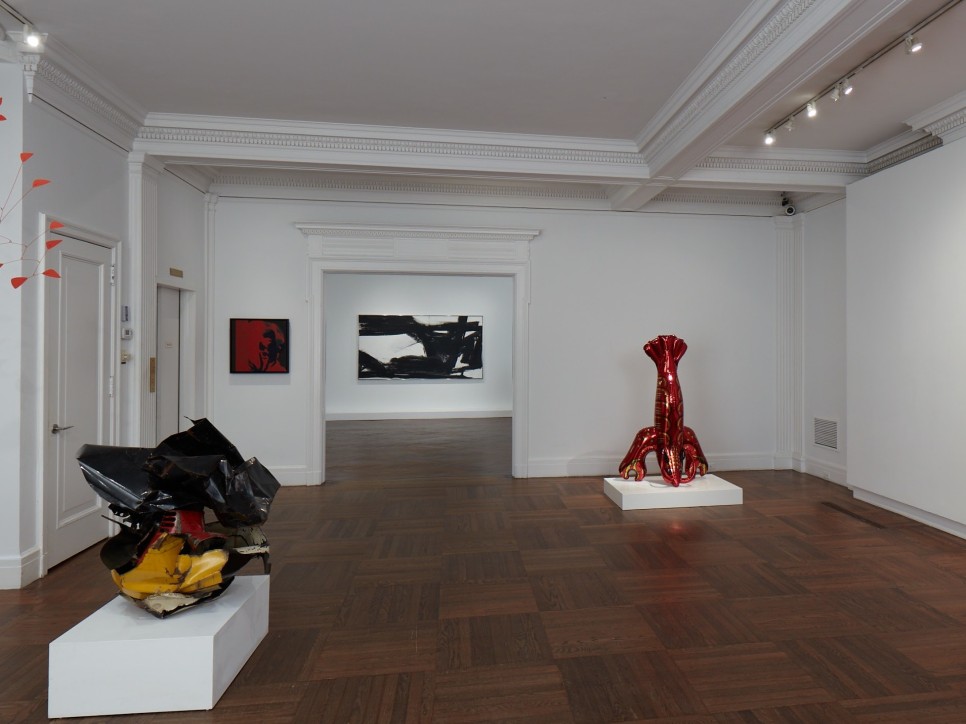
Andy Warhol was born Andrew Warhola on August 6, 1928 in Pittsburgh, Pennsylvania. Warhol attended Carnegie Institute of Technology (now Carnegie Mellon University), where he majored in pictorial design. After graduating, Warhol worked as an illustrator for several magazines such as Vogue, Harper's Bazaar, and The New Yorker.
During the 1950s, Warhol led a successful career as a commercial artist, becoming particularly well-known for his distinct blotting style and images of shoes. In 1952, he had his first solo show at the Hugo Gallery, New York, and although that show was not well received, by 1956 Warhol was included in his first group exhibition at the Museum of Modern Art, New York.
The 1960s is perhaps the most significant decade in Warhol's career, as he left the world of commercial illustration to commit himself to avant-garde art full-time, quickly catapulting to notoriety. Warhol made his first pop art paintings in 1961, although it wasn’t until the following year that Warhol began experimenting with the massively influential silkscreen. A technique he learned while in school that has come to be synonymous with Warhol, the silkscreen allowed him to quickly and easily reproduce the images from popular culture that would come to define his oeuvre – Marilyn Monroe, Liz Taylor, Campbell’s Soup Cans, and Brillo Boxes among them. In 1962, Warhol had his first solo exhibition of pop art at the Ferus Gallery in Los Angeles, which displayed all 32 flavors of Campbell’s Soup. Later that year, Warhol had his first major pop exhibition in New York at Eleanor Ward’s Stable Gallery.
By the mid-1960s, Warhol had moved into his now famous Factory on Manhattan’s 47th Street, which was host to a number of notable figures, such as Edie Sedgwick and Nico. At the same time, Warhol had dismissed painting in favor of creating experimental films such as Sleep (1963), a five-hour long film of the artist John Giorno peacefully sleeping.
In the 1970s, Warhol returned to painting after a near-fatal shooting by Valerie Solanas in 1968. During this time, Warhol investigated several themes ranging from Mao and hammers and sickles, to numerous commissioned portraits of jet-set celebrities. The decade also saw the birth of Interview, a magazine devoted to film, fashion, and popular culture.
Today, Warhol’s work can be found in almost every major museum worldwide, including the Museum of Modern Art, New York; the Metropolitan Museum of Art, New York; the High Museum, Atlanta; the Broad Museum, Los Angeles; Museo Jumex, Mexico City; Museum für Moderne Kunst, Frankfurt; and Leeum Samsung Museum of Art, Seoul, among others.
Warhol died on February 22, 1987 in New York City after complications from a routine gallbladder surgery. In 1989, the Museum of Modern Art, New York honored the artist with a major retrospective of his work. The first U.S. retrospective of the artist’s work since that time, “Andy Warhol—From A to B and Back Again,” was shown at the Whitney Museum of American Art, New York, and the Art Institute of Chicago from 2018-2020. Warhol’s legacy is continued through The Andy Warhol Museum, which opened in Pittsburgh, Pennsylvania in May of 1994, and the Andy Warhol Foundation for the Visual Arts, which provides grants to artists and institutions of all kinds.
